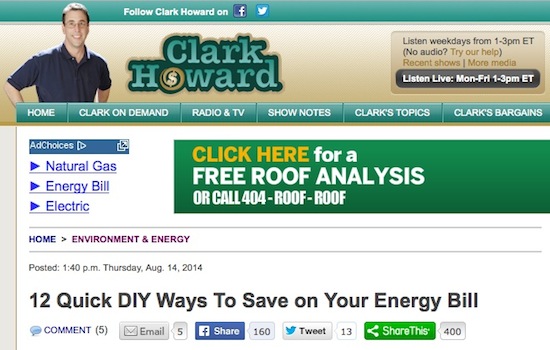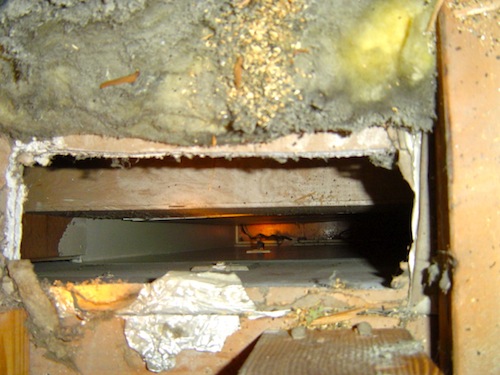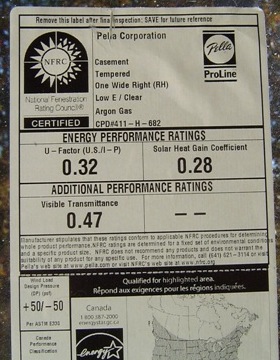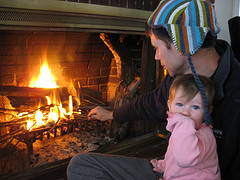Why Is Clark Howard Giving Bad Energy-Saving Advice?

Clark Howard is the penny pincher’s guru. My wife loves his radio show and website for all the money-saving tips he provides. Naturally, anyone trying to help people save money at home has to address energy use, and Howard does, too. Unlike some others, though, he’s generally well educated on the topic because he’s hung around the Southface Energy Institute enough to know the basics. (I don’t know if he ever used the clip, but he filmed me teaching how to do a blower door test there a few years ago.)
Clark Howard is the penny pincher’s guru. My wife loves his radio show and website for all the money-saving tips he provides. Naturally, anyone trying to help people save money at home has to address energy use, and Howard does, too. Unlike some others, though, he’s generally well educated on the topic because he’s hung around the Southface Energy Institute enough to know the basics. (I don’t know if he ever used the clip, but he filmed me teaching how to do a blower door test there a few years ago.)
So why is his list of 12 DIY ways to save energy so bad? I think I know the answer and will tell you at the end of this article, but first let’s look at that list and see what’s wrong with it. Most of the tips here are not worth following.
Clark Howard’s unfortunate list
Of the 12 items on Howard’s list, only 3 or 4 offer solid advice. The rest give incomplete, mythical, or wacky tips that will do little or nothing to cut your energy bills. One of them may even cost you a lot more in repairs than you’ll ever save. Let’s take them one at a time.
1. Seal drafts around doors and windows using weather stripping or caulking.
Yeah, yeah, yeah. Whenever you see this as the top way to make your home more energy efficient, it’s best to move on. It’s a sign that the author is just recycling garbage they’ve read in other articles of this ilk and doesn’t really know what he or she is talking about.
The truth is that caulking the windows and weatherstripping the doors will help stop drafts, but it’s likely to have more effect on your comfort than on your energy bills. And for most people, even the comfort improvement will be marginal. Why? Because doing this will reduce your total air leakage by a small amount. The bigger leaks are in your crawl space or basement and in your attic.

And that takes us to tip #2.
2. Make sure your attic is well insulated.
No, no, no! Don’t insulate your attic, at least not until you’ve sealed the air leaks up there. See that photo above? It was covered with insulation. That’s why the stuff that had been yellow fiberglass was nearly black when I discovered this hole. Fiberglass and cellulose don’t stop air leakage, so just covering a hole with them doesn’t stop the conditioned air from leaking out of your home nor unconditioned air from leaking in. It does filter it, though.
If your attic needs insulation, that’s a perfect opportunity to seal the air leaks up there. If you get new insulation without doing so, you’re just hiding the holes and making it harder and more expensive to seal them.
3. Get a water heater blanket if your unit is over 5 years old.
This might help a little bit but only if your water heater is in unconditioned space. If it’s inside the house, don’t bother with the blanket for winter energy savings.
4. Use natural sunlight for heating when available.
OK, but if your house is suited for this, you’re probably already getting it. You’re also probably getting unwanted heat in the summer. It’d be better to take a more comprehensive approach and find out what will save you more money over the course of the whole year.
 Window replacement generally isn’t cost-effective if your sole aim is to save money on your energy bills, but if you have old single pane windows that get a lot of sun, especially afternoon sun, it may be worth replacing the worst offenders with windows that have a low-emissivity (low-e) coating. That will cut down the solar heat gain in summer and in winter, but they also will keep the winter heat indoors much better than the old ones.
Window replacement generally isn’t cost-effective if your sole aim is to save money on your energy bills, but if you have old single pane windows that get a lot of sun, especially afternoon sun, it may be worth replacing the worst offenders with windows that have a low-emissivity (low-e) coating. That will cut down the solar heat gain in summer and in winter, but they also will keep the winter heat indoors much better than the old ones.
Replacing windows also gives you the opportunity to do some real air sealing there and have much more effect on your air leakage than caulking the outside. Unfortunately, many people don’t take advantage of it.
The key is knowing what your best opportunities are, and for that, I suggest a comprehensive home energy audit by a qualified pro. Check out my article on how to hire a company to do a home energy audit.
5. Put your ceiling fans in reverse during the winter to move rising heat downward.
Ugh! Really? Michael Blasnik has analyzed more home energy data than probably anyone else, and he says there’s no evidence that reversing your ceiling fans in winter will save energy.
6. Make sure your vents are not blocked by furniture.
Great advice! Finally, a tip I can get behind 100%. I wouldn’t limit the obstacles you should look for to furniture, though. I’ve seen vents covered by a wide variety of things, like rugs, toys, pet beds, or pets.
7. Get a programmable thermostat. If you really want to kick it up a notch, get a Nest.
Programmable thermostats don’t save energy. Setbacks can save energy in inefficient homes, and you can do that without a programmable thermostat. It can be a little easier with a programmable thermostat, though, and it’s nice to get up on a cold morning to a house that’s already warm. But if you’re just looking to save money, you don’t need a new thermostat.
8. Use a humidifier. Adding moisture lets you lower the thermostat without feeling much colder.
If you really need a humidifier, that means your house is too leaky. A dehumidifier is usually a band aid. Do as much air sealing as you can first and then see if it’s still too leaky. If you’re in a cold climate and have done as much air sealing as you can, then it’s time to look at whether you need a dehumidifier or not.
Also, the humidifier may use all or most of the energy you save by lowering the thermostat. I’m not sure why this is on the list at all. But hey, if you’re going to make a bad list, why not make it really bad!
9. Put plastic film over windows.
If you can stand the sight of plastic film in your windows, go for it. This can be a cheap, temporary fix to save energy in the winter. A better and more attractive way to accomplish the same goal is to use Indow Windows.
10. Try zoned heating. Close off rooms and vents in rooms that are not in use.
You’ve got to be kidding me! Really, Clark? I’m not going to explain it all over again since I just wrote about this folly a few weeks ago, but this advice could end up costing you far more in repairs to your heating and air conditioning equipment than it saves you on your energy bills.
Read this before closing your vents: Can You Save Money by Closing HVAC Vents in Unused Rooms?
11. Close off your fireplace and the flue on your chimney.
 Indeed! The best place for a fireplace is outdoors. If you’ve got an old fireplace that you don’t use, you can stop air leakage through the flue with a product like the Chimney Balloon.
Indeed! The best place for a fireplace is outdoors. If you’ve got an old fireplace that you don’t use, you can stop air leakage through the flue with a product like the Chimney Balloon.
12. Consider warming your bed with an electric blanket.
I gotta admit, this one strikes me as kinda wacky. I assume the energy savings come from lowering the thermostat in conjuction with using the electric blanket, but again, you may or may not save energy doing this since you’re using more in one place and less in another.
Why not just use the old off-grid method and add more regular blankets?
The traffic trap
I have a confession to make. I’ve sometimes fallen into the trap of going for more traffic to the Energy Vanguard website at the expense of quality content. If you look back at the 600+ articles I’ve published here, you’ll notice that some of them are…well…a bit fluffy. (Take this one, for example: Building Science Blogger Reaches Crazy Milestone on Special Day!) But even when I’ve done it just for traffic, I’ve always tried my best not to give out bad advice and I’ve corrected things that I found out I were wrong.
Clark Howard’s website, clarkhoward.com, is one of the most popular websites in the world. Their alexa.com ranking is really high, and I’m sure they want to stay there. To do so, they’ve got to keep pumping out the content. That’s the name of the game, and that, I believe, is why this article is so bad.
Some of the articles on clarkhoward.com have a Clark Howard byline and some don’t. The article in question here does not. It appears they’ve hired others to help keep the flow of content going, so they put together this list of the standard crap you find everywhere else. The same thing has happened at Bob Vila’s website, which is why I took them to task a few years ago for a really bad article about ventless gas fireplaces.
Both Howard and Vila spent years building their names into trustworthy brands, but the drive for Internet supremacy has led them onto shaky ground. It’s easy to hire someone to generate content for your website. It’s harder to ensure you get solid information once you go that route.
Again, Clark Howard is a great consumer advocate. If you’re looking for solid advice on how to save money on plane tickets, gasoline, or groceries, he’s your guy. He’s also got a nice section on the website about ripoffs and scams. I’m glad he’s out there doing what he does because it puts pressure on companies to stay honest and reasonable.
On the topic of saving energy at home, though, the advice on Howard’s website is hit or miss. He ran another article, 6 Ways To Cut Home Energy Costs, earlier this year that was fairly decent. It wasn’t by Howard himself but did have a byline (Melissa King, Contributor). The list of 12 DIY tips that was the subject of my critique here, however, was ludicrously bad.
This just goes to show you can’t believe everything you read on the Internet, even if it comes from a trustworthy name like Clark Howard.
Related Articles
Bob Vila and the Vent-Free Gas Fireplace — A Sorry State of Affairs
5 Questions to Ask When Replacing Your Air Conditioner
Sex Advice, Diet Tips, Decorating Ideas, & HVAC Design
NOTE: Comments are moderated. Your comment will not appear below until approved.
This Post Has 8 Comments
Comments are closed.

Allison,
Allison,
By your account, Mr. Clark produces volumes of valuable information on his site and I trust this unfortunate oversight by him or staff was not a misguided effort to expand his already considerable audience and become the Dr. Oz of energy use. Unfortunately for his readers, he made the mistake of choosing a writer who, as you suggested, simply scoured Google or the backs of cereal boxes for material…very old cereal boxes. Clearly, Mr. Clark or his editors, compounded the error by failing to have the piece fact-checked by someone who knows the energy business, and, more importantly, the science behind it.
BTW, at a recent congressional hearing, Dr. Oz was pilloried for his on-air and print sales tactics yet continues to endorse and spout nonsense about a wide variety of magical dietary supplements. “With great power comes great responsibility” but apparently, once you establish trust you are free to blather at will and, in the case of Dr. Oz, it has become an excellent business model.
Back to Mr. Clark, I found it particularly amusing that 4 of 5 comments following his article had this identical format:
Posted by TinaJuliee
“This comment has been removed for violation of the visitor agreement.”
Although I trust his moderators welcome informed discourse, one may only speculate. Come to think of it, I wonder how many of his followers have adequate knowledge of energy matters to call BS, so perhaps those dis-allowed comments were for other transgressions. You don’t, by any chance occasionally post to Mr. Clark’s site under the screen name “TinaJuliee” ?
Finally, an additional downside to Mr. Clark’s piece will be the need for many energy industry professionals to be unnecessarily burdened with having to disabuse their clients of Mr. Clark’s incorrect guidance. “But I read it on the Internet!”.
Allison, thanks for pointing out the emperors new clothes!
Best wishes.
If you never measure the
If you never measure the “savings”,
does it occur?
Are you sure?
Measure before, measure after. Without this rule, how are you not a fool?
Allison,
Allison,
Good review of Howard’s energy advice article. Looks like a great opportunity for you to write an article for them about how to achieve real energy savings. You ARE going to do that, aren’t you?
We really need a Creative Commons piece for out there that any blogger, writer, news reporter, etc. can grab and use whenever they feel the need to do a piece on saving energy at home. There are far too many bad articles, we need a flurry of good articles before the winter flurries come. Yes, we want to get paid for our efforts, but let’s get to a more forward position first instead of always having to write corrections to bad advice.
It is the season for folks looking to weather the winter with lower energy costs, so can your readers write their own piece for their local news media? A flood of good advice would be most welcome.
Assuming there are a couple
Assuming there are a couple of typos for number 8, referring to “dehumidifiers” instead of “humidifiers”, there is no doubt that a tighter average house with an average amount of people doing average things like cooking and bathing usually does not require additional humidification. For larger houses, or households where little cooking is ever done, a bypass type of humidifier uses no energy. There should be no need for steam or power humidifiers in houses.
As for ceiling fans, it all
As for ceiling fans, it all depends on the application as to whether ceiling fans should be operated one way or the other. For flat ceilings around 8 feet high, it makes little difference, but by having the fan push air upward toward the ceiling at a very low speed will cause the slightly warmer air at the ceiling level to move toward the walls and down to the floor without causing a draft.
For vaulted or cathedral type of ceilings, fans should be left in the same downflow position as they are for cooling season, just operated at an extremely low speed to allow the warmer air that stratifies upward to move to the lower area where people can benefit.
While no fan actually saves energy directly, they can move air to a more desirable area of the room so that thermostats can be lowered in the winter months. In the summer months, the air movement from ceiling fans will cause persons in that room to feel cooler from skin persperation evaporation, also allowing for the thermostat to be adjusted to a more economical setting.
Allison,
Allison,
Great article and I can agree with most of your comments and critique of Clark’s recommendations. This is my field to as I used to do spray foam insulation, but now handle everything regarding energy usage and savings, including solar Electric, Solar H2O, LED Lighting, Combined Heat and Power systems, and electric/gas energy from select suppliers at a lower rate than most people can buy it. This is a much more proven way to save energy -by making it yourself and buying it at the lowest price possible.
Like I said, Great article!! Thanks!
Remember the Indo Window guy
Remember the Indo Window guy was
laughed at in Pittsburgh PH conf.
Tread lightly with that one….
Prewarming the bed is the one
Prewarming the bed is the one tip I do like and use all winter. Nothing like getting into a warm bed, then turn off the electric blanket. By the time you fall asleep you’re warm in a room that is 60 F.